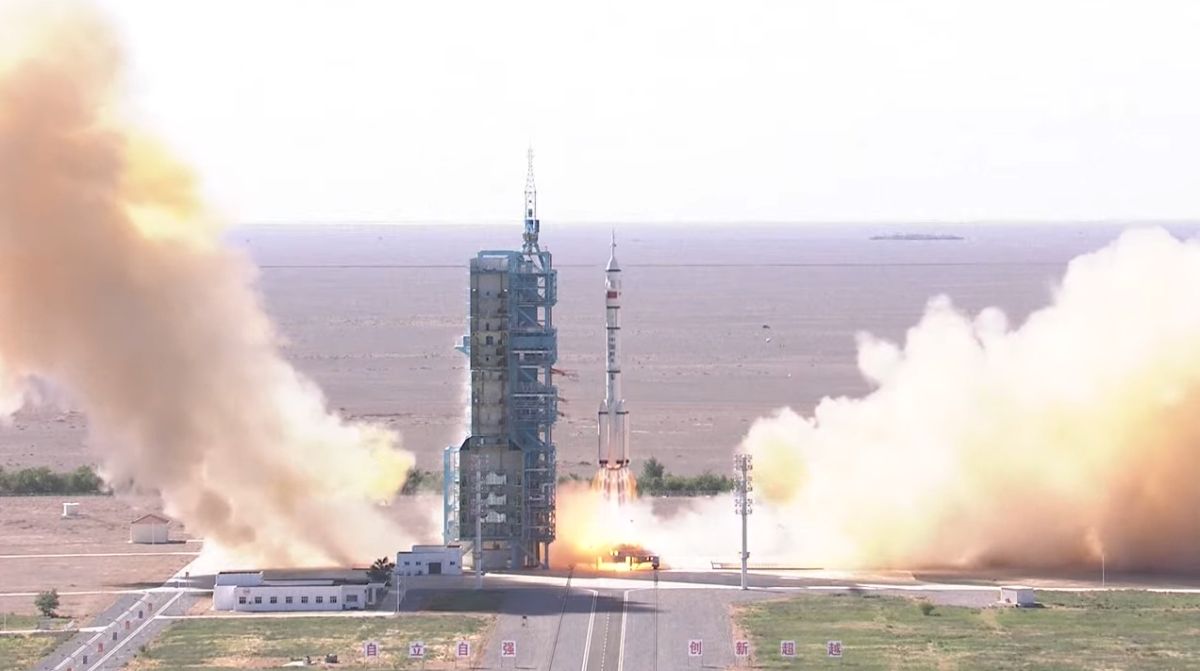Northrop Grumman’s uncrewed Cygnus spacecraft is scheduled to depart the International Space Station Tuesday, June 29, more than four months after delivering nearly 8,000 pounds of supplies, scientific investigations, commercial products, hardware, and other cargo to the orbital laboratory.
Read MoreMonth: June 2021
Medium of the Light Bucket
Telescope operator Carla Johns is a medium to the stars. The post Medium of the Light Bucket appeared first on Sky & Telescope.
Read MoreNASA to Air Third Spacewalk to Install New Station Solar Arrays
Two astronauts will venture outside the International Space Station Friday, June 25, for a third spacewalk to continue power system upgrades that are already increasing output and proving the technology that will enable NASA’s future Gateway lunar outpost.
Read MoreNASA Selects Engineering Services Contractor
NASA has awarded Aerodyne-SGT Engineering Services LLC (ASES) of Cape Canaveral, Florida, for a contract to provide engineering services for spaceflight and ground systems.
Read MoreNASA and ESA Astronauts Continue Installing Space Station Solar Arrays
Spacewalkers Shane Kimbrough of NASA (left) and Thomas Pesquet of the European Space Agency worked to install new roll out solar arrays on the space station.
Read MoreChina’s moon rocks are ready to be loaned out for science research
China’s Chang’e 5 spacecraft returned fresh moon rock samples late last year, but the main science of the mission is still just getting underway. Applications to borrow lunar samples delivered to Earth by Chang’e 5 in December are under review and will be decided soon, according to Jing Peng, deputy chief designer of the Chang’e-5 spacecraft system at the China Academy of Space Technology (CAST). “There was a conference one week ago in China regarding the applications for lunar samples,” Peng said, speaking on Thursday (June 17) at the Global…
Read More‘Giant arc’ stretching 3.3 billion light-years across the cosmos shouldn’t exist
A newly discovered crescent of galaxies spanning 3.3 billion light–years is among the largest known structures in the universe and challenges some of astronomers’ most basic assumptions about the cosmos. The epic arrangement, called the Giant Arc, consists of galaxies, galactic clusters, and lots of gas and dust. It is located 9.2 billion light-years away and stretches across roughly a 15th of the observable universe. Its discovery was “serendipitous,” Alexia Lopez, a doctoral candidate in cosmology at the University of Central Lancashire (UCLan) in the U.K., told Live Science. Lopez…
Read MoreRussia wants to send cosmonauts to China space station
Roscosmos is looking at ways to send its cosmonauts to the Chinese space station, launching from sites in either Russia or French Guiana. During a press conference at the recently concluded Global Space Exploration Conference (GLEX) in St. Petersburg, Russia, on June 15, Dmitry Rogozin, director general of Roscosmos, revealed that Russia is in discussions with China about crewed flights to the Chinese space station. Rogozin, in response to a question from Aviation Week about potentially launching cargo or crew to China’s new orbital outpost, said, “We are planning to…
Read MorePam Melroy Sworn in as NASA Deputy Administrator
NASA Deputy Administrator Pam Melroy took office Monday after she was given the oath of office by NASA Administrator Bill Nelson during a ceremony at the Mary W. Jackson NASA Headquarters building in Washington.
Read MoreThe Giant Star That “Blinked”
Astronomers are trying to understand why a giant star “blinked,” fading almost completely before brightening again over the course of about 200 days. The post The Giant Star That "Blinked" appeared first on Sky & Telescope.
Read More